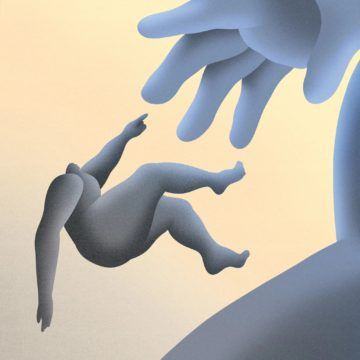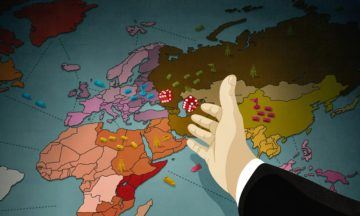Anita Slomski at Proto:
 Sarah’s story is familiar in a country where more than 40% of adults and a fifth of children have obesity. At school, she was bullied for her weight and, starting in her teens, dreaded getting weighed by doctors because they were always critical. At age 26, she had bariatric surgery—yet after dropping 80 pounds, her weight returned. Year after year passed with cycles of strict dieting and trials of various anti-obesity medications. “The weight always came back,” says Sarah, who asks that her real name not be used.
Sarah’s story is familiar in a country where more than 40% of adults and a fifth of children have obesity. At school, she was bullied for her weight and, starting in her teens, dreaded getting weighed by doctors because they were always critical. At age 26, she had bariatric surgery—yet after dropping 80 pounds, her weight returned. Year after year passed with cycles of strict dieting and trials of various anti-obesity medications. “The weight always came back,” says Sarah, who asks that her real name not be used.
Last fall, Sarah’s care team, including obesity specialist Fatima Cody Stanford, a physician at Massachusetts General Hospital’s Weight Center, recommended that Sarah try a new drug, semaglutide. “I knew within the first week that it was going to work,” says Sarah, now 46. “Without trying, I was eating less than what I normally did, but I didn’t feel hungry or deprived.” Within a year, she had lost 63 pounds. And although only time will tell whether the weight stays off, for now she feels as if “the battle is over” and she can get on with her life.
More here.

 The race to commercialize the Internet is over, and advertising is the big winner. This is excellent news if you are an executive or major shareholder of one of the handful of companies that dominate the
The race to commercialize the Internet is over, and advertising is the big winner. This is excellent news if you are an executive or major shareholder of one of the handful of companies that dominate the  I
I Will our descendants be cyborgs with hi-tech machine implants, regrowable limbs and cameras for eyes like something out of a science fiction novel? Might humans morph into a hybrid species of biological and artificial beings? Or could we become smaller or taller, thinner or fatter, or even with different facial features and skin colour?
Will our descendants be cyborgs with hi-tech machine implants, regrowable limbs and cameras for eyes like something out of a science fiction novel? Might humans morph into a hybrid species of biological and artificial beings? Or could we become smaller or taller, thinner or fatter, or even with different facial features and skin colour? In 1972, the American artist Lee Bontecou, who died this week at age 91, showed a series of plastic flowers and vacuum-formed fish and sea creatures in New York. She felt she got bad reviews and left the city, settling in rural Pennsylvania, where, with her artist husband, she raised a child (“Having a baby was the most wonderful piece of sculpture I ever made,” she later said). For 20 years she commuted to Brooklyn College to teach, but her low-to-no profile turned her into a kind of ghost artist.
In 1972, the American artist Lee Bontecou, who died this week at age 91, showed a series of plastic flowers and vacuum-formed fish and sea creatures in New York. She felt she got bad reviews and left the city, settling in rural Pennsylvania, where, with her artist husband, she raised a child (“Having a baby was the most wonderful piece of sculpture I ever made,” she later said). For 20 years she commuted to Brooklyn College to teach, but her low-to-no profile turned her into a kind of ghost artist. Enough about the past. We are about to step into Qatar’s balmy winter, average 70 to 79 degrees Fahrenheit, with high humidity to be dispersed by serious AC in the outdoor stadiums. Of the more than two hundred national teams that set out on this journey four years ago, only thirty-two remain, eight groups of four, the top two in each group to move on to the knockout stage. The games will run for almost a month, culminating in a final on December 18.. As is almost always the case, Brazil is favored to win, followed by Argentina, France, England, and Spain, and you never rule out Germany. All these countries have lifted the trophy before, and wouldn’t it be great if someone else crashed the party? After all, Croatia (population 3.8 million) made it to the finals the last time out, and the ageless midfield genius Luka Modrić still runs their show. There is always Kevin De Bruyne’s Belgium (population 11.5 million) or, for a real long shot, Africa’s best hope, Senegal.
Enough about the past. We are about to step into Qatar’s balmy winter, average 70 to 79 degrees Fahrenheit, with high humidity to be dispersed by serious AC in the outdoor stadiums. Of the more than two hundred national teams that set out on this journey four years ago, only thirty-two remain, eight groups of four, the top two in each group to move on to the knockout stage. The games will run for almost a month, culminating in a final on December 18.. As is almost always the case, Brazil is favored to win, followed by Argentina, France, England, and Spain, and you never rule out Germany. All these countries have lifted the trophy before, and wouldn’t it be great if someone else crashed the party? After all, Croatia (population 3.8 million) made it to the finals the last time out, and the ageless midfield genius Luka Modrić still runs their show. There is always Kevin De Bruyne’s Belgium (population 11.5 million) or, for a real long shot, Africa’s best hope, Senegal. In his 1625 essay “Of Truth,” the English writer and politician Francis Bacon—who, a few years earlier, had been deposed from his place as Lord Chancellor of England for corruption—commented on this passage: “What is truth? said jesting Pilate, and would not stay for an answer.” The hint here is that Pilate turns away from Jesus after asking his question because he is afraid it might be answered. And Pilate may not be the only one who has such feelings.
In his 1625 essay “Of Truth,” the English writer and politician Francis Bacon—who, a few years earlier, had been deposed from his place as Lord Chancellor of England for corruption—commented on this passage: “What is truth? said jesting Pilate, and would not stay for an answer.” The hint here is that Pilate turns away from Jesus after asking his question because he is afraid it might be answered. And Pilate may not be the only one who has such feelings. A select group of the world’s top researchers studying obesity
A select group of the world’s top researchers studying obesity  What happened in South Korea offers proof that fundamental transformations of living standards are possible in a few decades. South Korea’s experience, and similar growth trajectories in Taiwan and Singapore, have often been referred to as “economic miracles.” But what if South Korea’s economic growth wasn’t something mysterious or unpredictable, but rather something that we could comprehend and, most importantly, replicate? At current rates of growth, living standards in the poorest countries in the world will eventually catch up to the United States — in about 700 years.
What happened in South Korea offers proof that fundamental transformations of living standards are possible in a few decades. South Korea’s experience, and similar growth trajectories in Taiwan and Singapore, have often been referred to as “economic miracles.” But what if South Korea’s economic growth wasn’t something mysterious or unpredictable, but rather something that we could comprehend and, most importantly, replicate? At current rates of growth, living standards in the poorest countries in the world will eventually catch up to the United States — in about 700 years. Colorado-based Prometheus Materials has developed masonry blocks from a
Colorado-based Prometheus Materials has developed masonry blocks from a  T
T On the first page of his 2015 blockbuster book,
On the first page of his 2015 blockbuster book,  Delegates at the COP27 climate summit in Sharm El Sheikh, Egypt, have agreed to create a global
Delegates at the COP27 climate summit in Sharm El Sheikh, Egypt, have agreed to create a global  Barely four decades into its existence, the Islamic republic is confronted by another eruption of public rage, this time brought about by the nation’s women, that may yet end in revolutionary change. A majority of Iranians now groaning under this austere order have no recollection of the revolution that produced it, and reject its central justification—an Islamic concept known as velayat-e faqih, or “guardianship of the jurist.” Originally conceived as a license for the clergy to assume responsibility for orphans and the infirm, the late Ayatollah Khomeini amended it to encompass the whole of society. By these means were his unfortunate subjects relegated to the status of state property.
Barely four decades into its existence, the Islamic republic is confronted by another eruption of public rage, this time brought about by the nation’s women, that may yet end in revolutionary change. A majority of Iranians now groaning under this austere order have no recollection of the revolution that produced it, and reject its central justification—an Islamic concept known as velayat-e faqih, or “guardianship of the jurist.” Originally conceived as a license for the clergy to assume responsibility for orphans and the infirm, the late Ayatollah Khomeini amended it to encompass the whole of society. By these means were his unfortunate subjects relegated to the status of state property. Today more than 2.3 million people live in Doha, while Qatar as a whole has a population of 2.9 million, just 300,000 of whom are Qatari citizens. The rest are migrant workers, only a small proportion of whom – Arabic Levantine and Indian families that arrived a generation or two back – have residence rights. Everyone else is there on a temporary work visa: professionals from the Global North; Filipinos, who make up a large proportion of Qatar’s domestic workers and cleaners; Africans, many of whom work as taxi drivers or security guards; and almost a million men from South Asia, Nepal and Bhutan who have toiled to build the new city. This racialised hierarchy, as John McManus argues in his anthropological account of Qatar, is a modern version of the British Empire’s ethnic division of labour.
Today more than 2.3 million people live in Doha, while Qatar as a whole has a population of 2.9 million, just 300,000 of whom are Qatari citizens. The rest are migrant workers, only a small proportion of whom – Arabic Levantine and Indian families that arrived a generation or two back – have residence rights. Everyone else is there on a temporary work visa: professionals from the Global North; Filipinos, who make up a large proportion of Qatar’s domestic workers and cleaners; Africans, many of whom work as taxi drivers or security guards; and almost a million men from South Asia, Nepal and Bhutan who have toiled to build the new city. This racialised hierarchy, as John McManus argues in his anthropological account of Qatar, is a modern version of the British Empire’s ethnic division of labour.